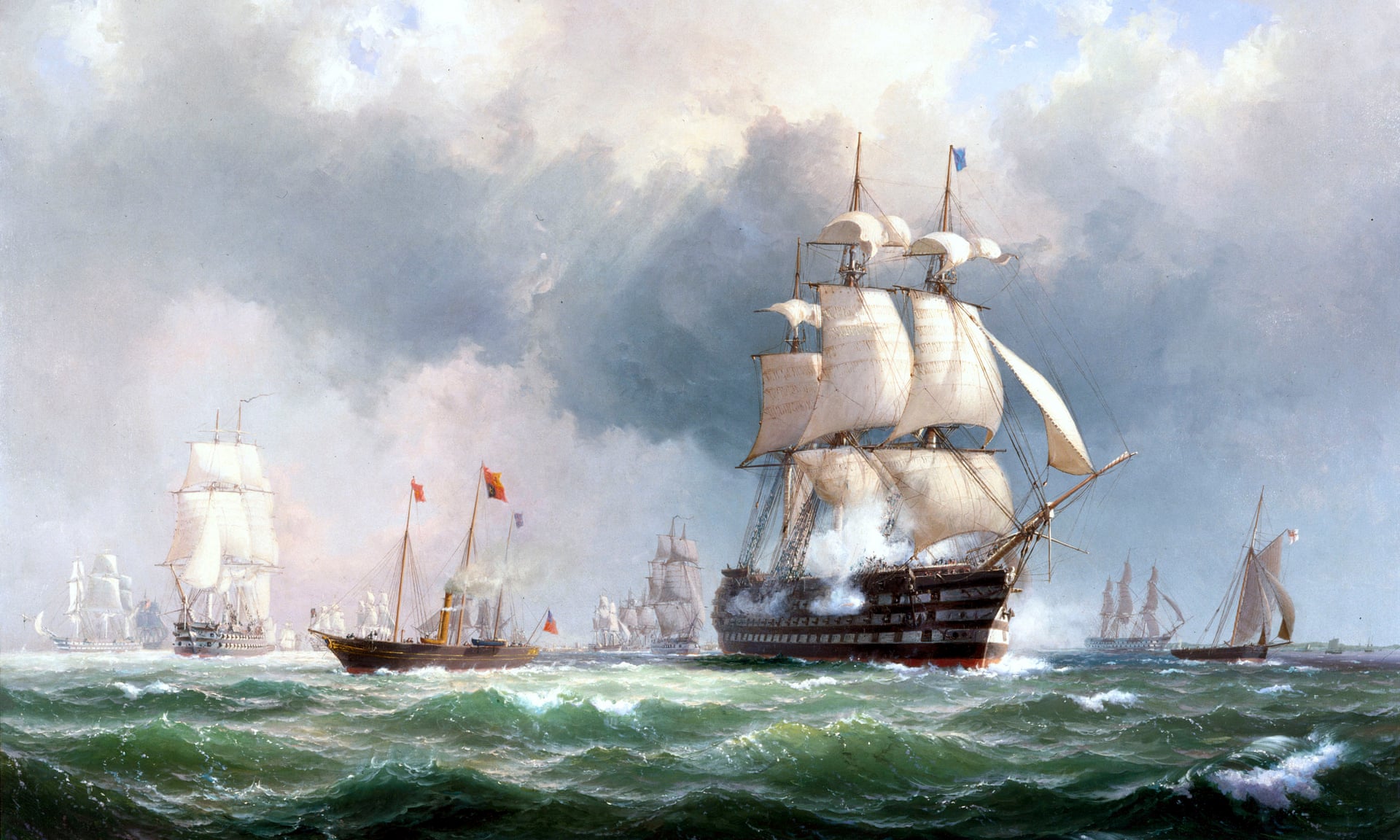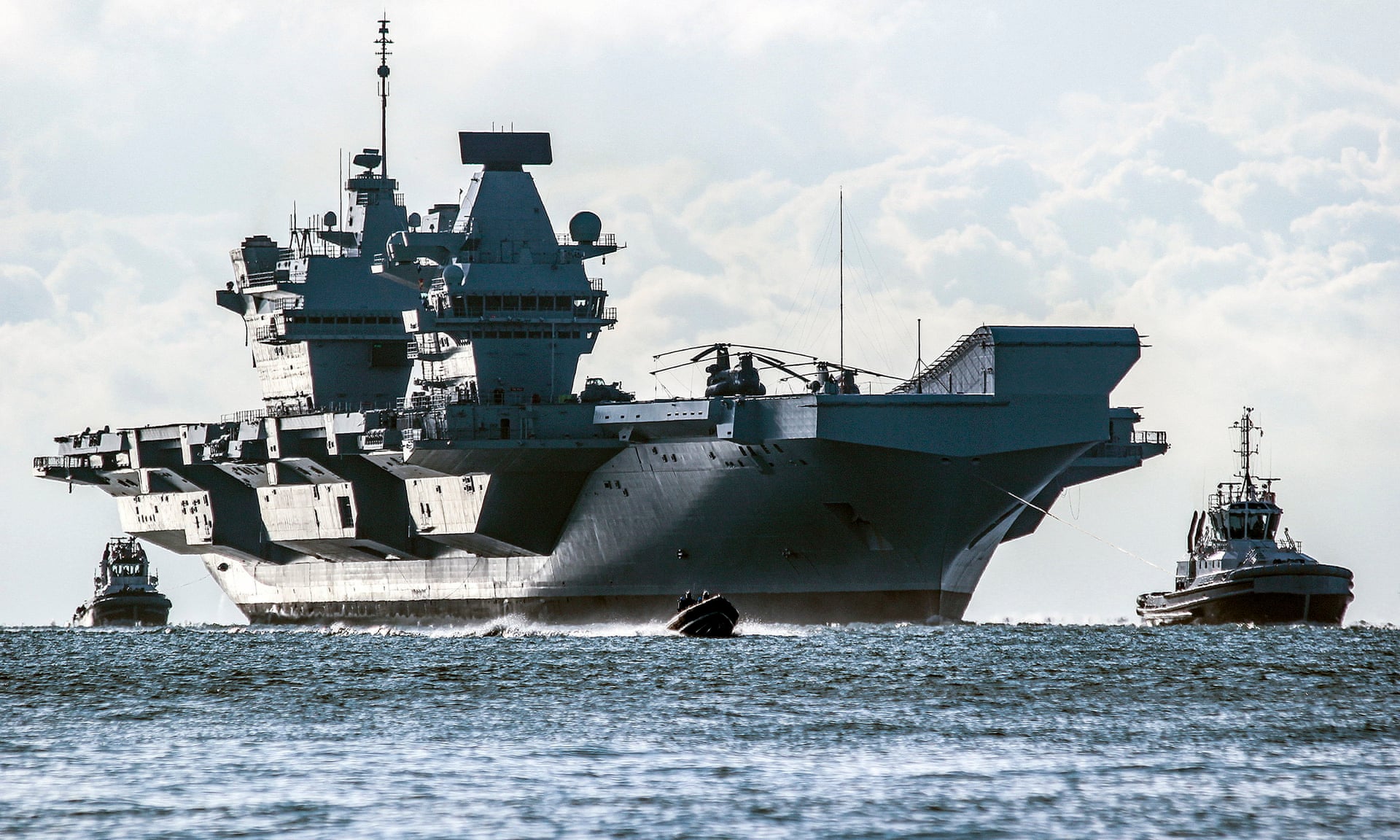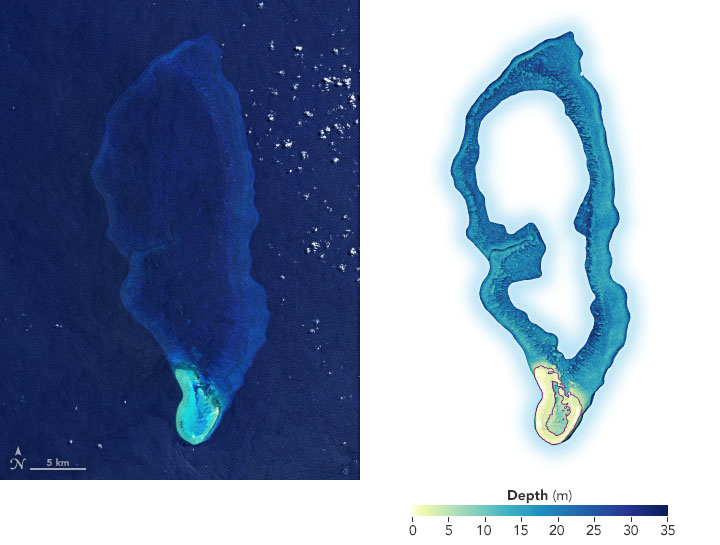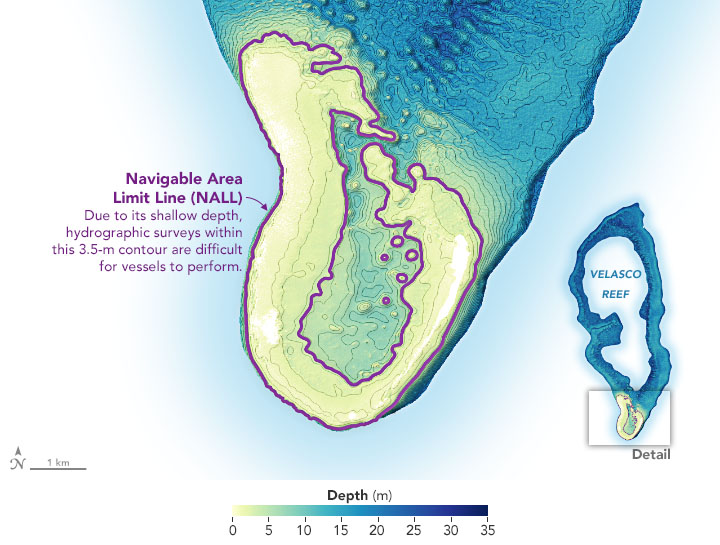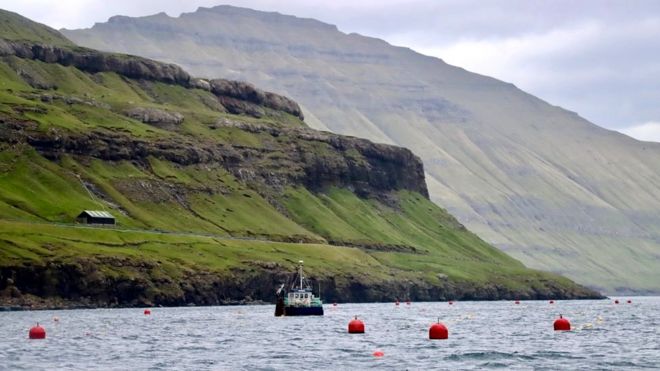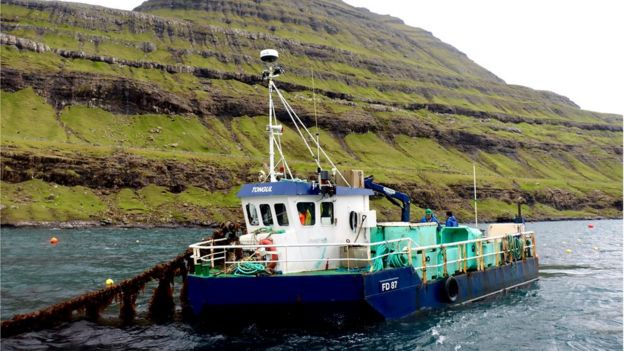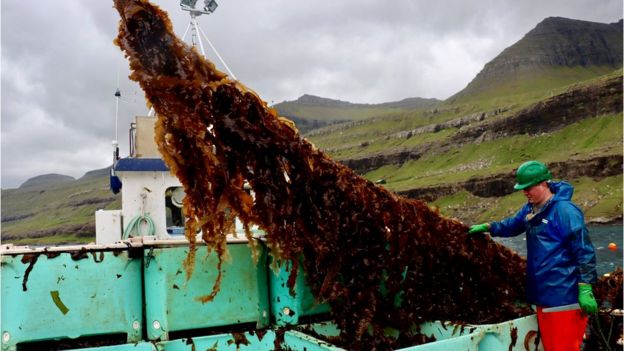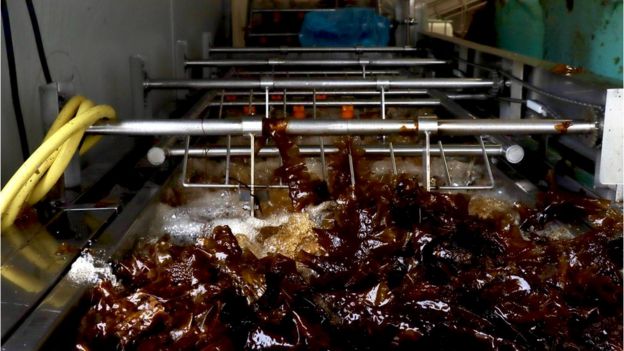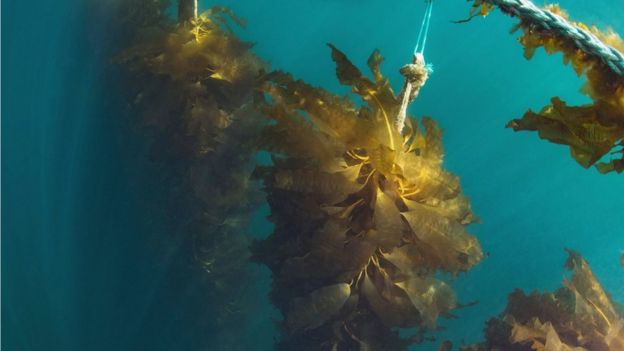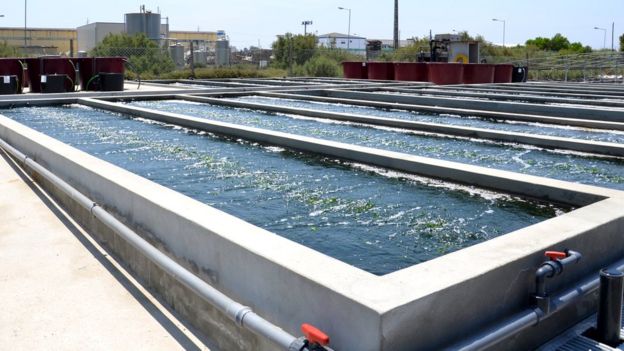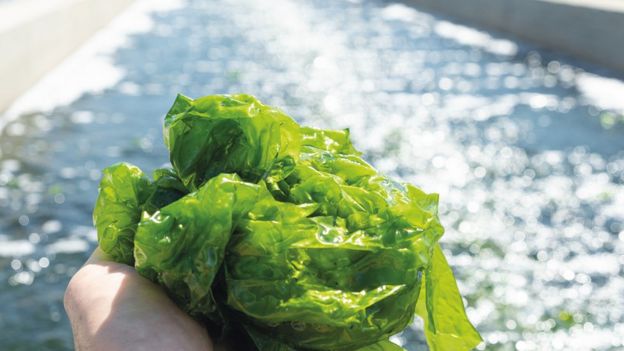A polar bear and her cub on sea ice in the Arctic north of Svalbard
(Image © Larissa Beumer / Greenpeace)
From China Dialogue by David Adam
The ocean has cushioned the blow of global heating, but at a cost to the stability of climate systems and marine life
As climate change tightens its grip, the effects are being felt across the planet.
The global ocean plays a key role and has so far soaked up most of the carbon dioxide and excess heat human activities have produced.
But it is also vulnerable.
Already some significant changes are underway, and the climate disruption to our seas looks set to worsen.
1. Rising temperatures
About 90% of the excess heat trapped by atmospheric greenhouse gases is eventually soaked up by the world’s oceans.
Because oceans are so big, the temperature change to the seawater can seem small – the sea surface layer has warmed by just over 0.5C in the last century.
That’s still enough to cause significant disruption, and the warming is accelerating.
Things expand as they warm, becoming less dense and taking up more space.
The oceans are no different.
Indeed, between 1993-2010, thermal expansion is thought to have raised sea levels by an average of
1.1 millimetres a year, accounting for much of the overall rise we have seen.
The total observed rise in sea level for the 1993-2010 period was an average of 3.2mm every year, with contributions from various other sources, including water stored on land, in forms such as snow.
Warmer water also influences the atmosphere above it.
Increased sea surface temperatures are associated with making hurricanes and tropical cyclones more powerful, potentially increasing the number of the most severe category 4 or 5 storms that strike islands and coastal areas.
Warmer water can also dissolve less carbon dioxide, which means more will stay in the atmosphere to accelerate global warming.
Just like on land, rising temperatures in the oceans generate damaging heatwaves.
They occur when unusual weather conditions or water currents cause above-average water temperatures for at least five consecutive days.
But they can last for months or even years.
A
marine heatwave called “The Blob” hung around the northern Pacific from 2013-2015 and killed a million seabirds on the west coast of the United States.
2. Acidification
As carbon dioxide dissolves in seawater, it reacts to form carbonic acid: a fairly weak acid, but enough to alter the pH of seawater, which is naturally alkaline.
Since the industrial revolution, dissolved carbon dioxide is estimated to have lowered the average pH of the top layer of the oceans by 0.1 pH units, from about 8.2 to 8.1 (7 is neutral).
That change doesn’t sound much, but because pH is measured on a logarithmic scale, it actually represents a
nearly 30% increase in acidity.
This has some significant knock-on effects for seawater chemistry and the ecosystems that rely on it.
The increase in acidity is particularly bad news for shellfish and other forms of sea life that use the mineral calcium carbonate to form their shells and exoskeletons.
More acidic water can hold less of this mineral, so there’s less available for so-called calcifying organisms such as oysters, clams, sea urchins, shallow water corals, deep sea corals and calcareous plankton.
Worse, the change in chemistry encourages existing carbonate structures to dissolve.
Coral is particularly vulnerable.
Experiments on a small patch of Australia’s Great Barrier Reef show that artificially reducing the seawater carbon dioxide level, so restoring pH to pre-industrial levels, boosted coral calcification by 7%.
Then, when the scientists raised the amount of carbon dioxide and so decreased ocean pH to the level expected by the end of this century, calcification dropped by a third.
3. Melting ice
As climate change continues, many scientists believe it is inevitable that massive ice sheets in Greenland and Antarctica will collapse and melt entirely, eventually pouring enough water into the oceans to raise global sea levels by several metres.
It will take time – hundreds, perhaps thousands of years – but the melting is accelerating.
The
UN’s climate body now projects that, under a low-emissions scenario, average sea level will rise between 61cm and 1.1m by the end of the century.
By 2050, rising seas could push peak high tides above land currently home to at least
300 million people, mostly in Asia.
Villagers in the Sundarbans work to repair a damaged dike after seawater flooded an adjacent paddy field.
This low-lying delta region straddles the India-Bangladesh border.
Home to an estimated 4.5 million people, it is particularly vulnerable to rising sea levels.
(Image © Peter Caton / Greenpeace)
Coastal ecosystems will be affected too.
Beach and dune environments face more severe and frequent flooding and erosion, while sensitive freshwater habitats including mudflats and marshes – needed for bird species to breed – will be swamped with seawater.
Sea ice, which forms when seawater freezes each polar winter, is also melting and thinning more and more each summer.
Melting of this ice doesn’t significantly contribute to sea levels, but it does pose big problems for creatures that rely on it for their habitat.
Most notably, polar bears need sea ice to hunt seals, and
studies show many of the 25,000 bears estimated to remain in the Arctic are struggling.
One colony of animals around the Southern Beaufort Sea, in northeastern Alaska and Canada, was found to have
declined by 40% between 2001 and 2010.
4. Changes in ocean currents
Ocean currents are vulnerable to the effects of climate change.
At present, those currents act as massive global conveyor belts: as winds push through the atmosphere from the warm equator to the colder poles, they drag surface water with them.
Cooled by the chilly polar air, this water becomes denser, and so sinks to the deep ocean, where it is pushed back towards the equator (becoming warmer, less dense and rising as it goes) by the next batch of denser water coming from above.
Round and round the cycles go, transporting and mixing nutrients as they swirl along.
Melting ice interferes with this system.
Huge amounts of fresh water pouring in at the poles lowers the density of the seawater, making it slower to sink.
Without the same driving downward force, the whole global cycle can weaken.
In 2018,
scientists suggested that the major current in the Atlantic Ocean had slowed by about 15%.
And some studies predict that could worsen to more than 30% by 2100.
Based on what has happened in the past, scientists say slower ocean currents can bring significant changes in the Earth’s atmosphere, and so to the weather.
Winters in Europe could be much colder (an idea taken to extremes in the film The Day After Tomorrow).
Meanwhile, the waters of the South Atlantic could become warmer, and because sea surface temperature influences wind and rainfall, this could disrupt monsoon cycles that are vital for crops across Asia and South America.
5. Deoxygenation
Ocean creatures rely on oxygen dissolved in seawater, just as we breathe it from the atmosphere.
But climate change is
gradually draining oxygen from the seas: about 1-2% is thought to have been lost from 1960 to 2010, and that could rise to 4% by 2100.
There are several reasons.
Warmer water can hold less of the gas, while disruption to ocean currents limits the amount of oxygen transported from the surface to the depths.
A growing problem occurs when the fertiliser and other nutrients added to agricultural soils drain into rivers and eventually get dumped into coastal waters.
Boosted by the unexpected supply of food, algae can grow and proliferate rapidly to form
massive floating blooms – sometimes called
green (or red) tides.
These can be problematic, for example by releasing chemicals toxic to fish.
And when the algae die and sink, the microbes that work to decompose the blooms in the depths soak up oxygen from the surrounding water.
Gdansk beach in northern Poland was closed to tourists due to a toxic algal bloom in the summer of 2018 (Image: Wojciech Strozyk / Alamy)
In severe cases, dissolved oxygen levels can fall so low that parts of the deep ocean become barren.
A
2008 global survey found at least 405 of these dead zones, up from 49 in the 1960s.
Perhaps most affected is the Baltic Sea.
Despite efforts to limit agricultural run-off from surrounding countries, the Baltic still has a massive dead zone of about 70,000 square kilometres – about the size of Ireland.
6. Marine food chain collapse
Already under pressure from overfishing and pollution, marine life – from large fish down to cyanobacteria – is also affected by climate change.
As seas warm and currents shift, some sea life can simply move, for example towards the cooler water of the poles.
These shifts in distribution have knock-on effects for species that feed on them: from people trying to catch tuna, to fish looking for zooplankton.
Under stress from shifting resources, species are especially vulnerable if they are already weakened by acidification and oxygen depletion.
Changes to interconnected and complex systems of food webs are hard to predict.
Fisheries in some areas might actually get a boost as valuable new species are driven into their nets.
But, overall, the impact is likely to be bad.
A study last year suggested that warmer waters had reduced the total amount of fish that can be caught in a sustainable way by 4% since the 1930s.
The worst-affected sea was the Sea of Japan, with a 35% reduction in fishery size due to warming.
The East China Sea saw a drop of 8%.
Future drops in fish catches would threaten the food security of a large fraction of the world’s growing population.
According to the UN, fish provide more than 3.1 billion people with at least 20% of their animal protein.
It’s an important source of fatty acids and micronutrients too.
Fish currently supply 17% of all the protein consumed in the world, and demand is expected to continue to increase as incomes rise in the developing world.
Links :


